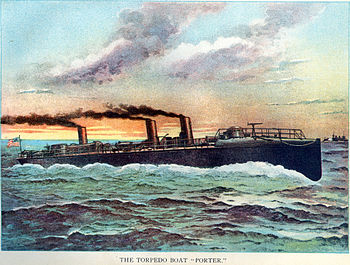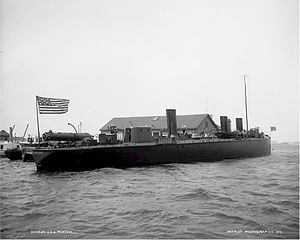BRISTOL NEWS, MARCH 1, 1897
BRISTOL NEWS, MARCH 1, 1897
by Margaret Whitehead
One hundred and twenty years ago, on March 1, 1897, Marjorie Van Wickle was at the Jekyll Island Club in Brunswick, Georgia, with her parents Augustus and Bessie Van Wickle. While she was there she received a long, rambling letter from her friend Lewis Herreshoff. He had promised to write her a “winter” letter from Bristol where it had been “cold and bleak.” He began his letter by getting all the bad news out of the way – a friend had died, and his mother had been taken ill; many of his friends were spending the winter out of state, so he was feeling lonely and bored. Miss Julia Drury, Marjorie’s art teacher, was studying art in Boston, and Mary Howe and Anna Low had gone to Europe for four months. Dr. Howe and his wife were in Egypt, exploring the Nile.
The winter had not been as cold as the year before, even though they had a 15” snowfall in January, with the promise of more to come. The snow meant that Bristolians had enjoyed fine sleighing: “such a lot of sleighs were out as never were seen, and all the people enjoyed it immensely.” Nevertheless, Lewis was glad that spring was near. He loved the summer when he could spend all his time out of doors socializing with all the summer visitors, Van Wickles, Pardees, and others. By the end of February, he reported, people were beginning to play golf at the Bristol Golf Club adjacent to Blithewold, where the new Club House was being built. So anxious were the young people to get out in the spring-like weather that they were already riding their bicycles. In the town center, the DeWolf Inn had been purchased by someone from Providence who planned to renovate it and reopen it as a hotel.
The most exciting news was the building of a torpedo boat at the Herreshoff workshops on Hope Street. It was 180 feet long and 18 feet wide, and had been designed by Lewis’s cousin, Bertie Chesebrough. Trials began in early January. “To make ready for the grand trial they kept making her go faster and faster as the machinery became smoothed and the men [got] used to running the boilers of which she has 3. At last, early in Feb. the top speed was reached and all was ready for the Gov. Board to come from Washington.” On February 9th, they spent the whole day loading the torpedo boat with coal. It all had to be weighed and added to the weight of the men on board, so that calculations could be fine-tuned. With 220 pounds of steam “she went like a mad bull, her nose was way up in the air, a big wave of foam at the stern, and even when she was at the other side of Hog Island you could easily hear her roar. [She] was accepted at once, and since then went to N.Y. and Washington where she now is. It is a great ceremony when a vessel is put into commission, that is, taken into the service of the U.S. Government.” The torpedo boat was named USS Porter and served in the Spanish-American War the following year, patrolling the waters off the north coast of Cuba and supporting the blockade.


USS Porter, 1889
Lewis ended his letter by urging Marjorie to come to Blithewold as soon as possible, “I hope as early as you can, for all of June is lovely here … we shall have plenty of music. You must come up often to our house and hear all the lovely playing and singing we shall have.”
